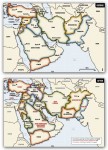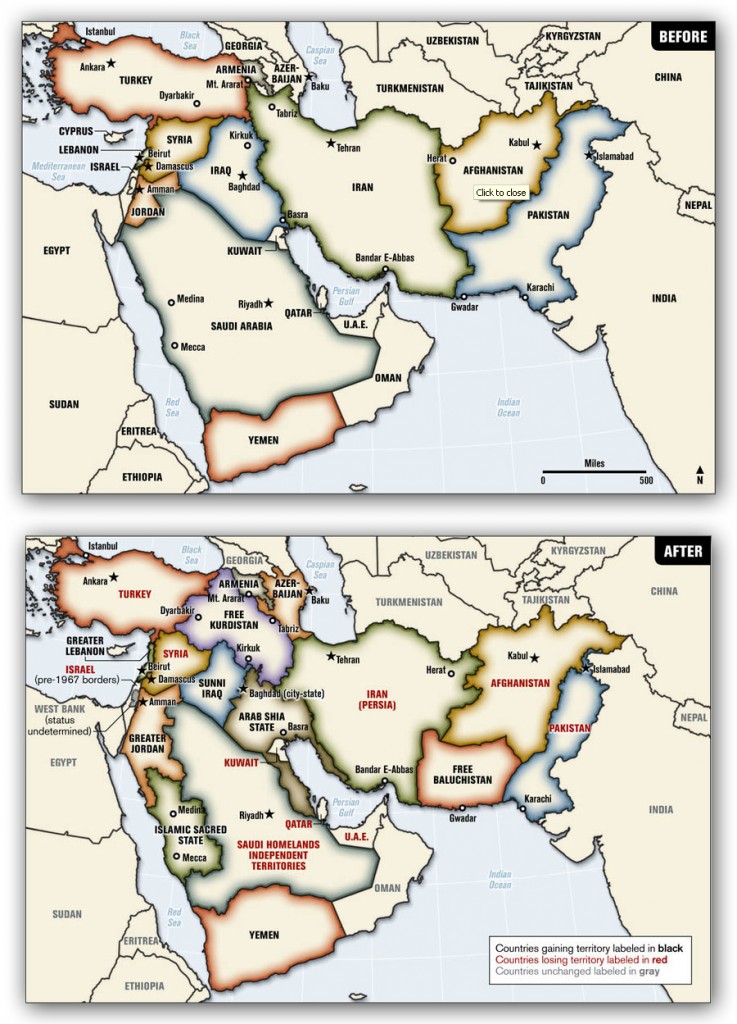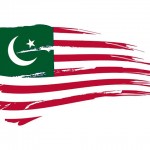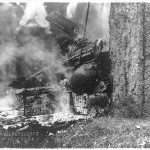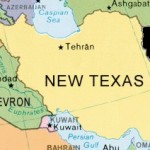I’ve been trying to get my mind around a 2006 article in the Armed Forces Journal that I recently came across. The post, entitled Blood Borders: How a better Middle East would look by Ralph Peters, purports to redraw the Middle East along what the author calls organic borders. As someone who’s often stared at the current and past maps of the Indian Subcontinent and wondered, “what if”, I instantly recognize the appeal. Check out the map below:
The fundamental contours of the redrawn Middle Eastern map aren’t as important as the very redrawing itself. It’s a Balkanization of the Middle East along religious and ethnic lines.
Of particular interest to me is the creation of Kurdistan:
The most glaring injustice in the notoriously unjust lands between the Balkan Mountains and the Himalayas is the absence of an independent Kurdish state. There are between 27 million and 36 million Kurds living in contiguous regions in the Middle East (the figures are imprecise because no state has ever allowed an honest census). Greater than the population of present-day Iraq, even the lower figure makes the Kurds the world’s largest ethnic group without a state of its own. [emphasis mine] Worse, Kurds have been oppressed by every government controlling the hills and mountains where they’ve lived since Xenophon’s day.
… But were a free plebiscite to be held, make no mistake: Nearly 100 percent of Iraq’s Kurds would vote for independence.
As would the long-suffering Kurds of Turkey, who have endured decades of violent military oppression and a decades-long demotion to “mountain Turks” in an effort to eradicate their identity. … The refusal by the world’s legitimate democracies to champion Kurdish independence is a human-rights sin of omission far worse than the clumsy, minor sins of commission that routinely excite our media.
Even six years later, Peters is still probably right. Iraqi Kurdistan is largely a self-governing entity. It still agitates against any incursions by Baghdad against its semi-sovereignty, as well it should given the central authority’s ineptitude.
Also consider the fate of Saudi Arabia. There’s nothing particularly Saudi about Arabia. The House of Saud’s rule over the Muslim holy lands and its influence in pedaling Wahabbi dogma has resulted in economic, cultural and developmental stagnation throughout the region. Peters’ solution is probably as unworkable as anything else in the article but it holds a certain justice:
Imagine how much healthier the Muslim world might become were Mecca and Medina ruled by a rotating council representative of the world’s major Muslim schools and movements in an Islamic Sacred State — a sort of Muslim super-Vatican — where the future of a great faith might be debated rather than merely decreed. True justice — which we might not like — would also give Saudi Arabia’s coastal oil fields to the Shia Arabs who populate that subregion, while a southeastern quadrant would go to Yemen. Confined to a rump [called the] Saudi Homelands Independent Territory around Riyadh, the House of Saud would be capable of far less mischief toward Islam and the world.
You mean that the Turks or Persians might get a say in controlling Mecca and Medina? Hah. Well, as far as your humble narrator is concerned, the people of the Arabian Peninsula (and certainly the Saudis) forfeited the Mantle of Heaven centuries ago.
Balkanization is not a clean process, nor is it likely to result in a purely organic recreation. Although I linked a certain amount of developmental stagnation to ethnic purity in my last post, I think that a more naturally constituted Middle East would result in a stabler Middle East, capable of beginning the process of cross-cultural exchange that is so needed to spur development and combat stagnation and the inward-looking viewpoints.
_____________________
H/T to Noah Millman who linked a Pat Buchanan article in whose comment section I found a link to the Daily Quiddity which contained the map from Peters’ article which triggered a Google search to locate the original Peters’ article in the June 2006 Armed Forces Journal.
